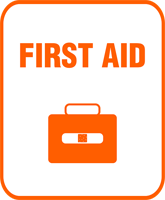 A product recall is not only expensive, it’s embarrassing. You have the build up to the big release, the excitement of launch day… and then you have to sheepishly issue an announcement not to use the product, and here’s everybody’s money back.
A product recall is not only expensive, it’s embarrassing. You have the build up to the big release, the excitement of launch day… and then you have to sheepishly issue an announcement not to use the product, and here’s everybody’s money back.
No matter how well you test your product, there’s always the chance of that bug or factory defect rendering it useless or even dangerous. We can’t guarantee that a product is safe for release, but we can make product recalls less likely by going the extra step in quality control.
DfM
DfM is a term being thrown around lately, meaning Design for Manufacturability. This means that you need to create a product that is easy to churn out on an assembly line or with a 3D printer. You’re trying to eliminate things like delicate moving parts, finding a more efficient way to build the product.
Verify Your Manufacturers And Suppliers
If you’re looking at a manufacturer that has produced six recalled products in the last two months, look elsewhere. No matter how good your design, no matter how good your product, bad manufacturing is bad manufacturing.
Test The Mass Production Models Personally
Don’t assume that you know what to expect because you took a look at the prototype. Test your mass production models thoroughly before sending them out to store shelves.
Break Your Toys
Don’t just fiddle around in testing and quality control, try to break the product, and see how much effort that takes. If it’s easy, then it’s time to go back to the drawing board.
Have A Plan B
Your plan B will depend on the nature of your product. A device that does not work as advertised might be fixed with something as simple as a firmware update, for instance. You should have a crisis management team of coders and PR professionals to handle the job if something goes wrong.
Keep Your Legal Team In The Loop
Some product recalls take place because of rules and regulations that have changed between design and launch. Keeping your legal team in the loop throughout the entire process of development and production will help to ensure that you’re not wasting a year working on something that’s going to get you sued.
There’s no way to guarantee that you will never have to recall a product, but by taking these steps, you can at least stack the deck in your own favor.














